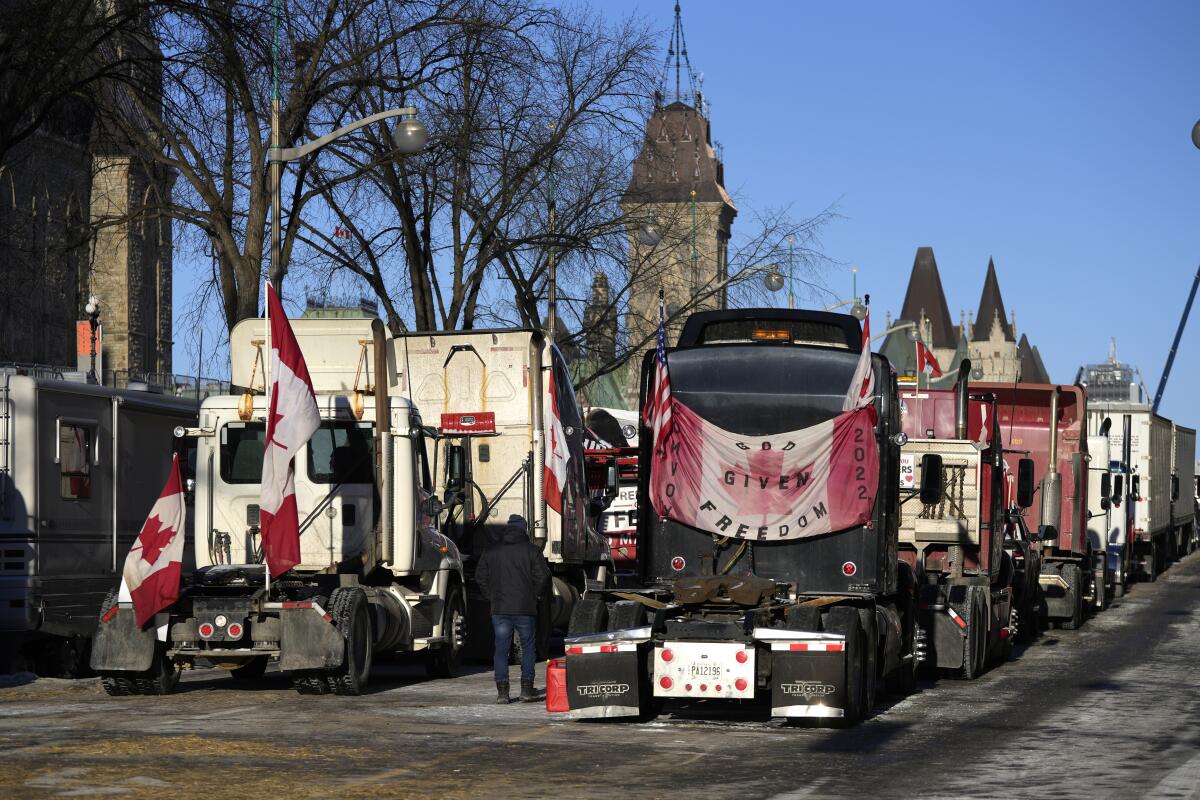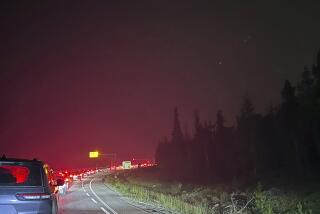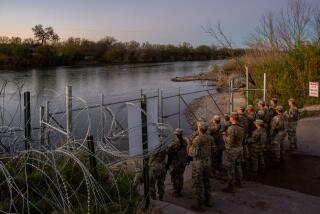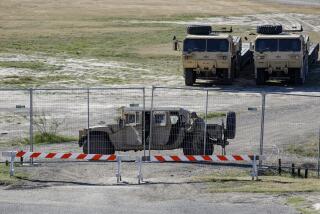Ottawa’s police chief resigns amid truck protest in Canada

OTTAWA — The police chief of Ottawa resigned Tuesday amid criticism of his inaction against the trucker protests that have paralyzed Canada’s capital for more than two weeks, while demonstrators elsewhere abandoned another blockade at the U.S. border.
Trucks with horns blaring rolled out of the southern Alberta town of Coutts, across from Montana, ending the siege that had disrupted trade for more than two weeks. Police earlier this week arrested 11 people at the obstructed crossing and seized guns and ammunition.
The two developments came a day after Prime Minister Justin Trudeau invoked extraordinary emergency powers to try to end the occupation in Ottawa and elsewhere around the country.
Across Canada and beyond, the question in the coming days will be whether it works.
In Ottawa, the bumper-to-bumper demonstration by hundreds of truck drivers against the country’s COVID-19 restrictions and the failure of Police Chief Peter Sloly to break the siege early on have infuriated many residents. They have complained of being harassed and intimidated by protesters.
Sloly’s resignation was confirmed by a government official who was not authorized to discuss the matter publicly and spoke on condition of anonymity. A message seeking comment from Sloly through the Ottawa police force was not immediately returned.
Canadian Public Safety Minister Marco Mendicino said it is time for police to begin using their broad authority conferred under Canada’s Emergencies Act, which allows the government to ban the blockades and begin towing away trucks.
“We have given new powers to police, and we need them to do the job now,” he said late Monday after Trudeau announced that he was invoking the law.
Government leaders have not indicated when or where the crackdowns on the self-described “Freedom Convoy” would begin. Mendicino said they were still working out the details on where the prohibited zones will be.
The government will be able to ban blockades at border crossings, airports and in Ottawa; freeze truckers’ personal and corporate bank accounts and suspend their licenses; and target crowdfunding sites that are being used to support the blockades.
It also can force tow trucks to move the big rigs out of intersections and neighborhoods. Up to now, some towing companies have been reluctant to cooperate because of their support for the truckers or fears of violence.
The protesters around the country are decrying vaccine mandates for truckers and other COVID-19 precautions and venting their anger toward Trudeau’s Liberal government. Trudeau has emphasized that Canada’s two largest trucking unions denounce the protests and that the vast majority of truckers are vaccinated.
The prime minister’s decision to invoke the Emergencies Act came amid growing frustration with government inaction and concerns about the weapons found at the Alberta crossing.
Also, a heavy-duty truck and farm tractor tried to ram a police cruiser at the site on Sunday, authorities said.
The nation’s public safety minister said Canada can no longer tolerate the disruptions and threats.
“What the operation revealed is that you got a very small, hardened core driven by ideology,” Mendicino said. “We have been fortunate thus far there has not been mass violence.”
Ontario Premier Doug Ford, whose province includes Ottawa and Windsor, the site of a now-disbanded blockade at the Ambassador Bridge to Detroit, said: “Hopefully the police in the next few days, hopefully sooner, can move.”
Ford said the siege in Ottawa is complicated by the presence of children in the protest. “They have kids there. We don’t want anything to happen to kids. Bring your kids home,” he said.
The busiest and most important border crossing, the Ambassador Bridge, was reopened Sunday after police arrested dozens of demonstrators.
The nearly weeklong siege had disrupted auto production in both countries, but it was returning to normal on Tuesday.
Authorities also said traffic was moving again at the Pacific Highway border crossing south of Vancouver. The Royal Canadian Mounted Police said officers ordered demonstrators out late Monday, and several were arrested.
Protesters in the capital appeared more entrenched.
Erik Mueller, a truck driver who quit his job to join the blockade in Ottawa, called the emergency measures targeting the drivers “insane.”
“We are not backing off,” he said. “We have too much to lose.”
Wayne Narvey said he drove his 30-year-old motor home from News Brunswick through a snowstorm to get to the capital.
“They can take our bank accounts, they can freeze our assets, they can take the insurance off our vehicles,” he said. “They can play all the games they want. We’re not leaving.”
The demonstrations in Canada have inspired similar convoys in France, New Zealand and the Netherlands. U.S. authorities have said that truck convoys may be in the works in the United States.
Gillies reported from Toronto. Associated Press writer Ted Shaffrey in Ottawa and Tom Krisher in Detroit contributed to this report.
More to Read
Sign up for Essential California
The most important California stories and recommendations in your inbox every morning.
You may occasionally receive promotional content from the Los Angeles Times.










